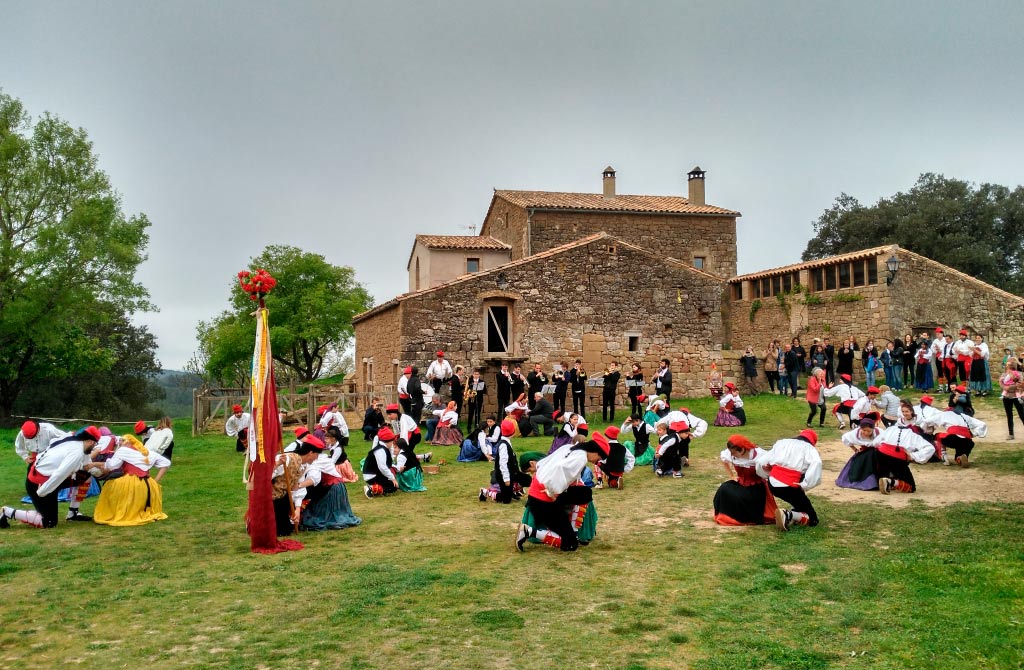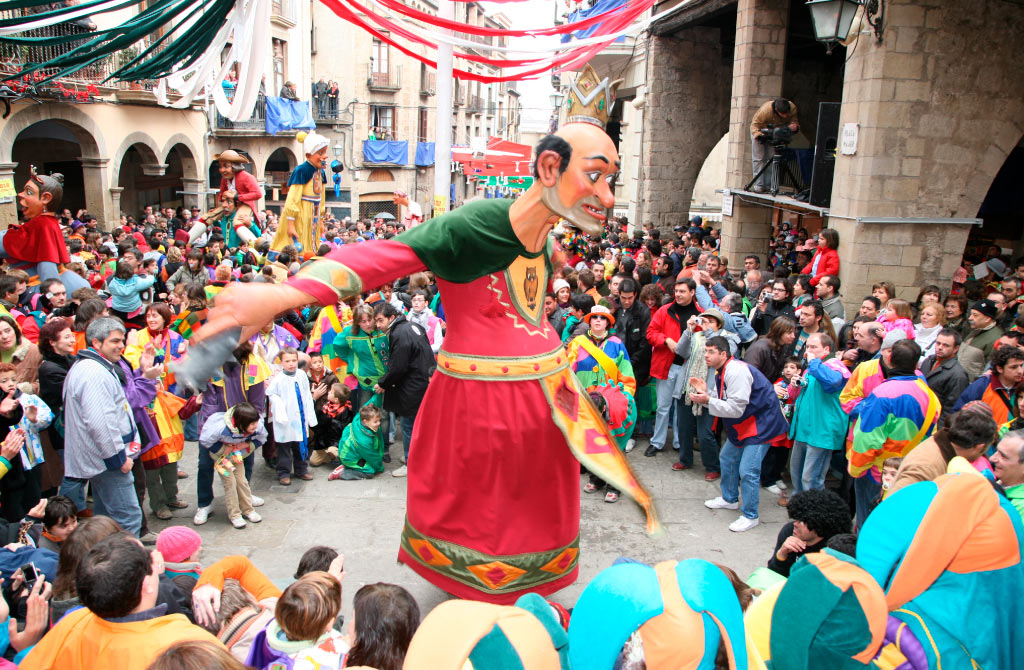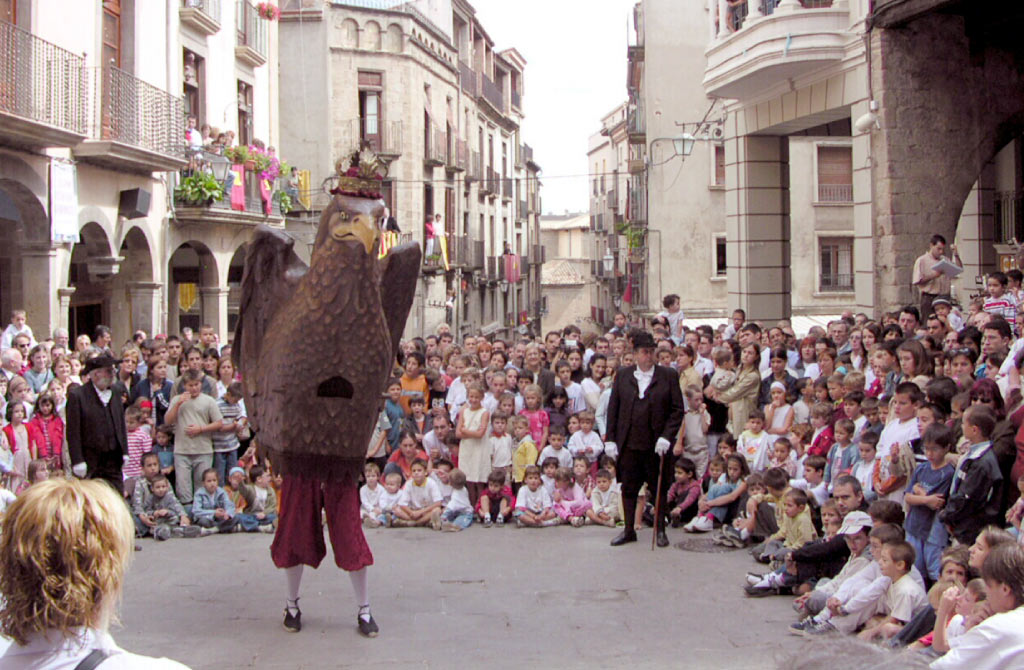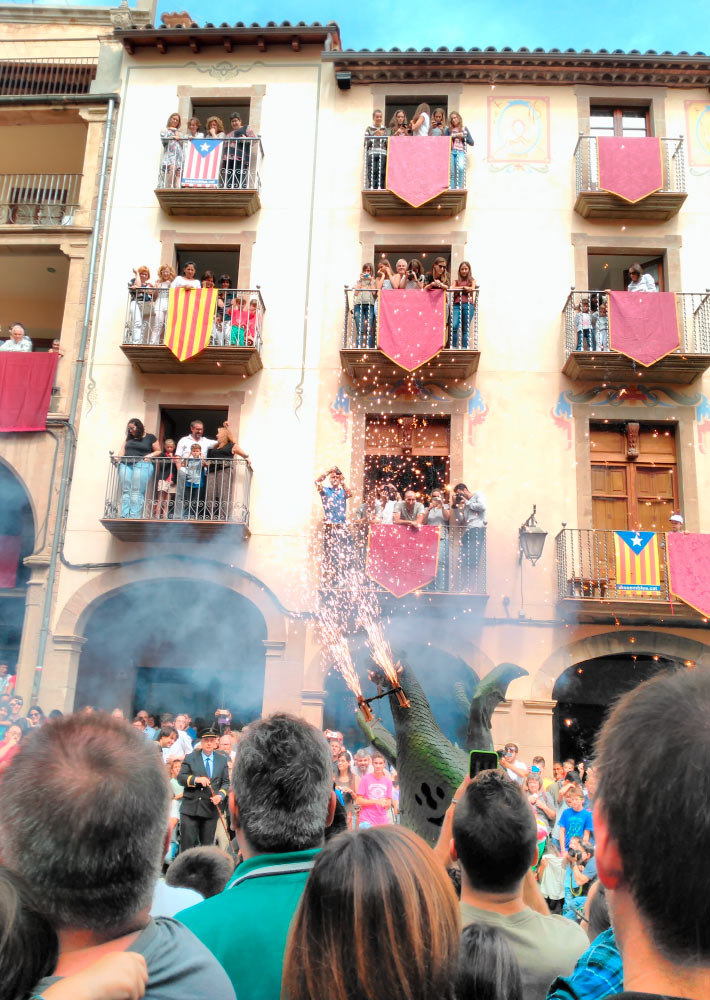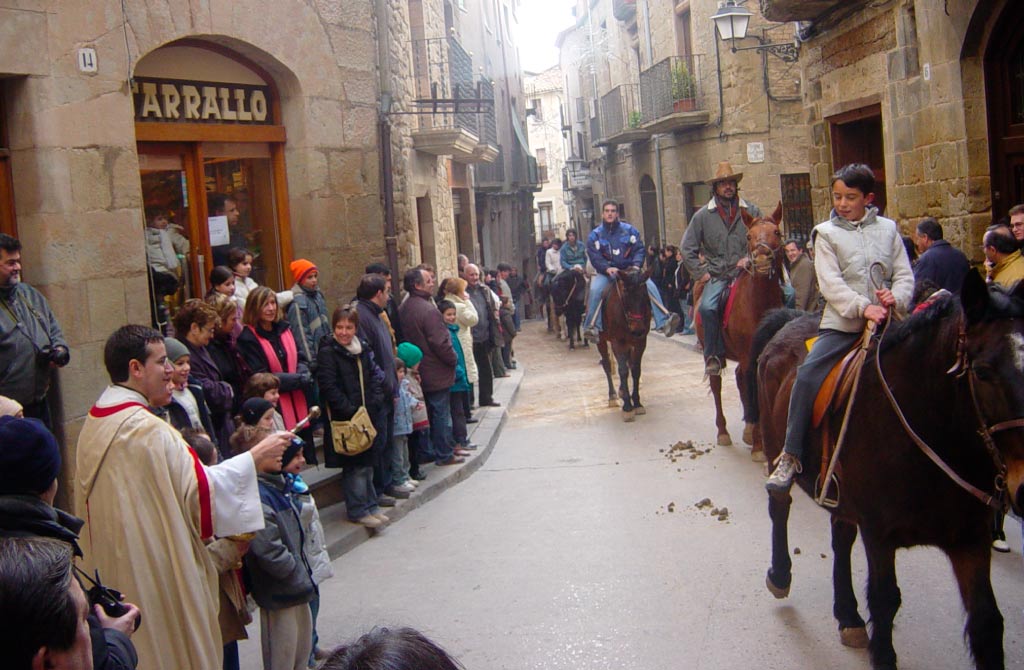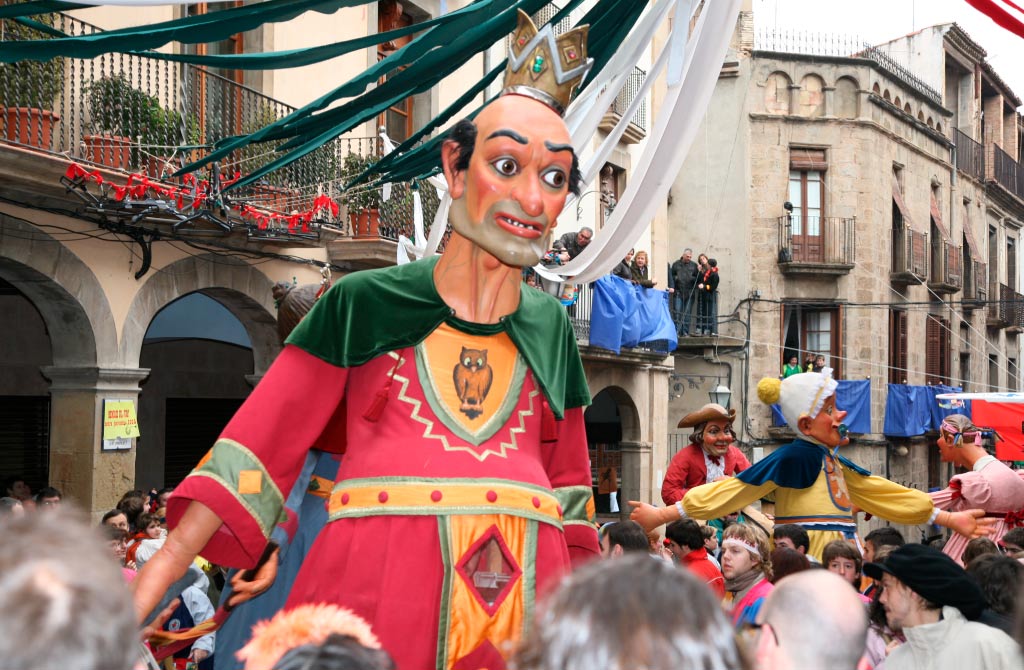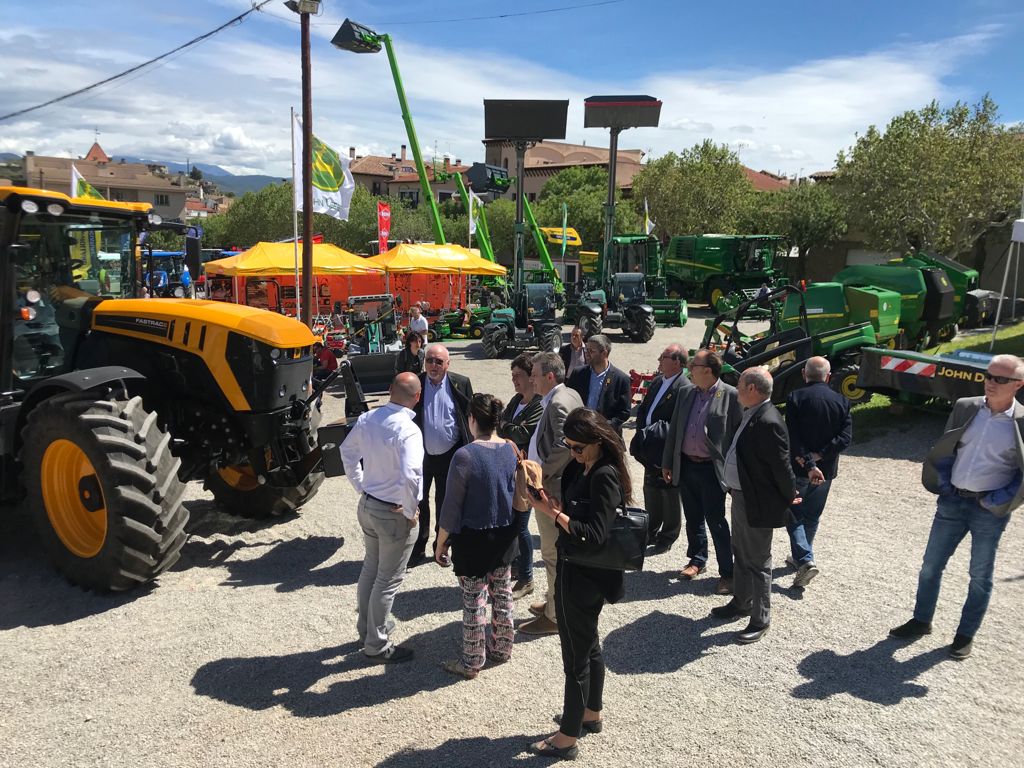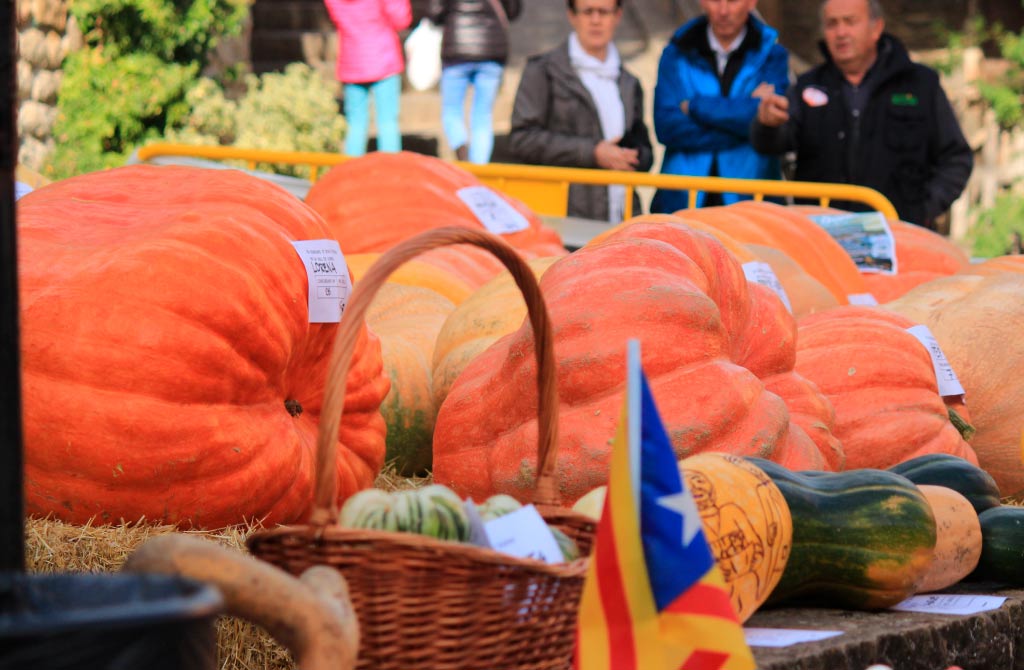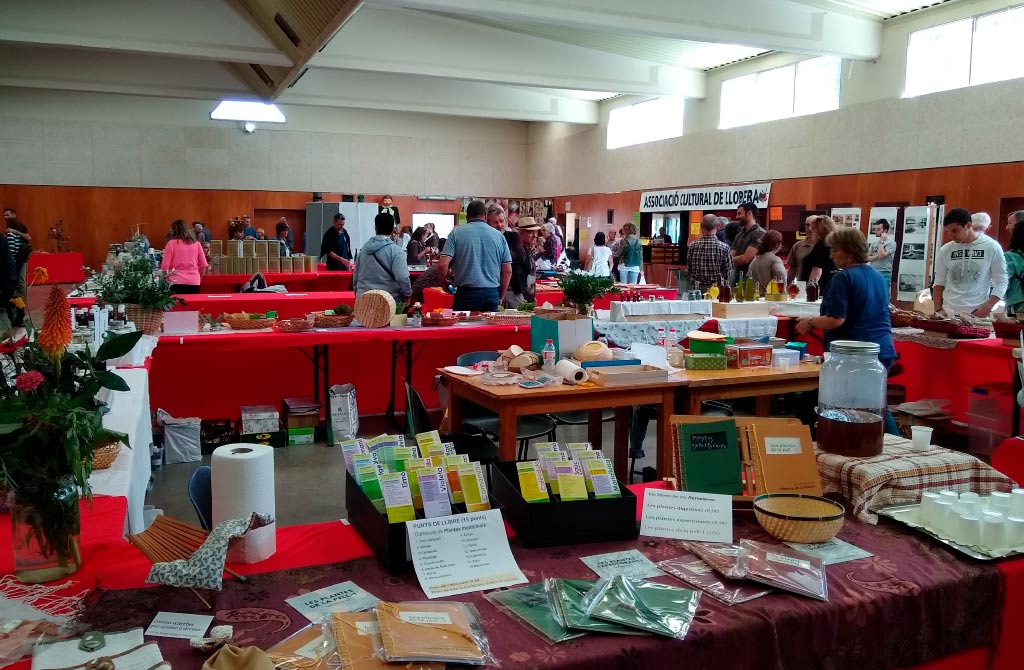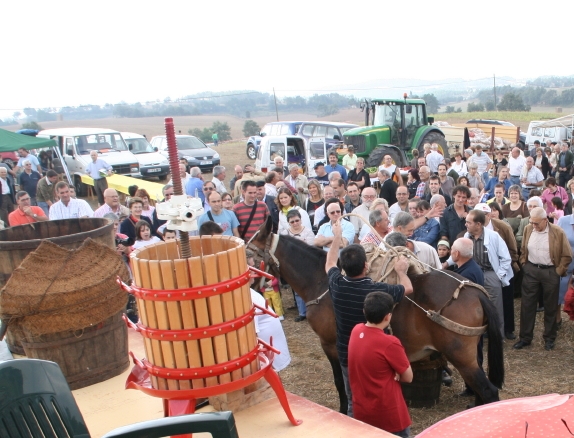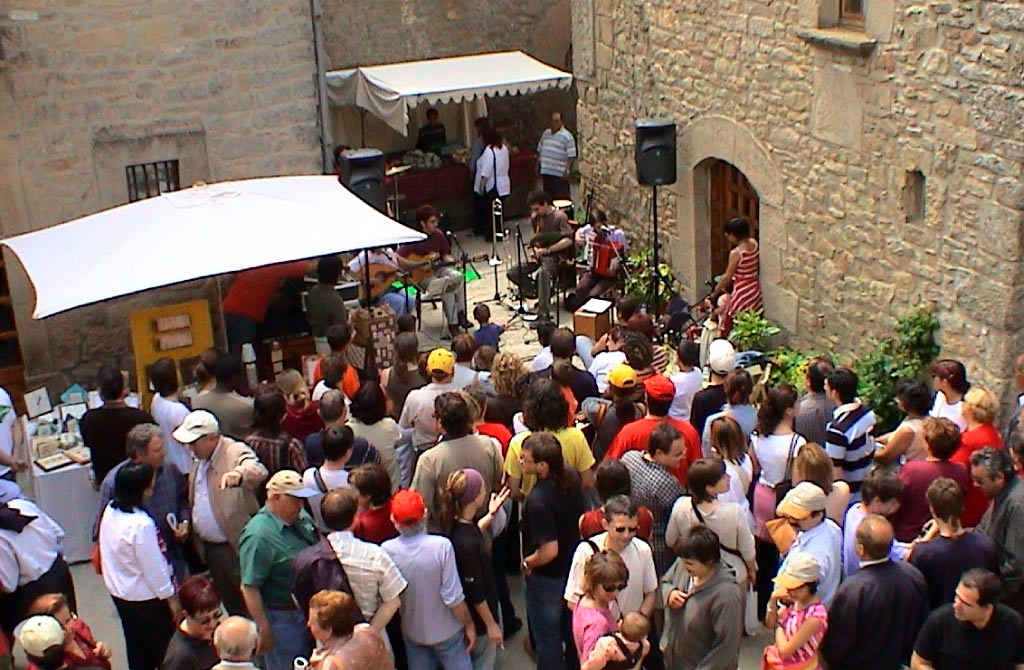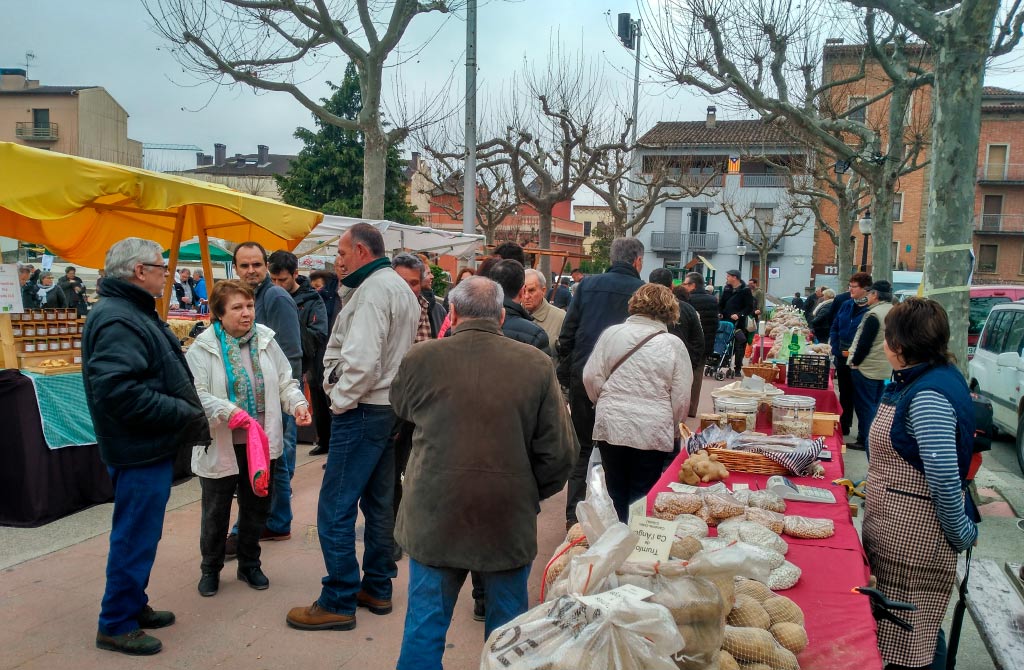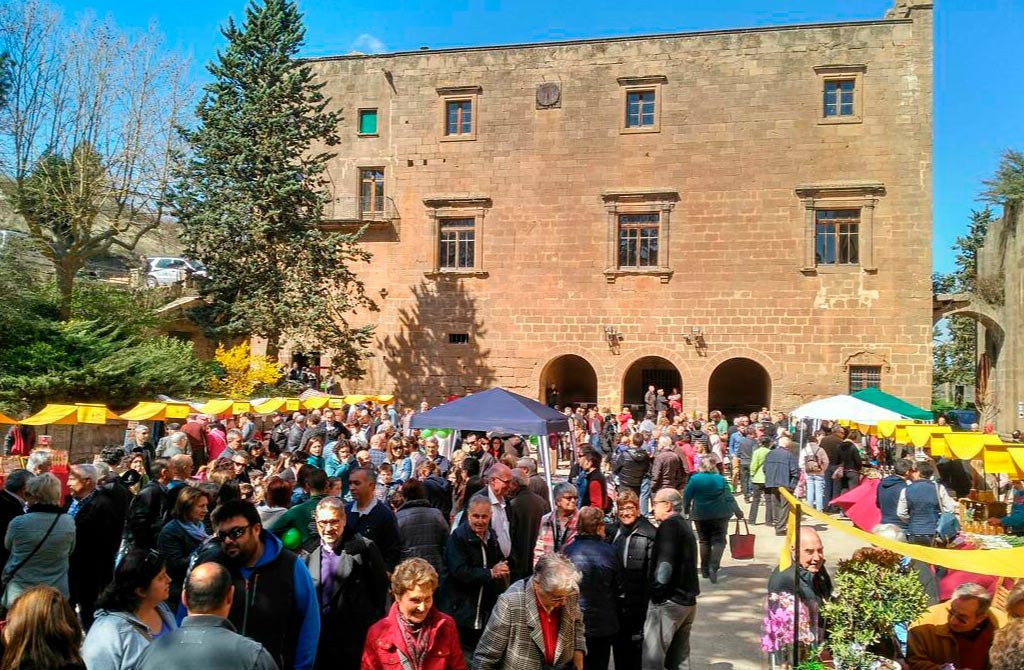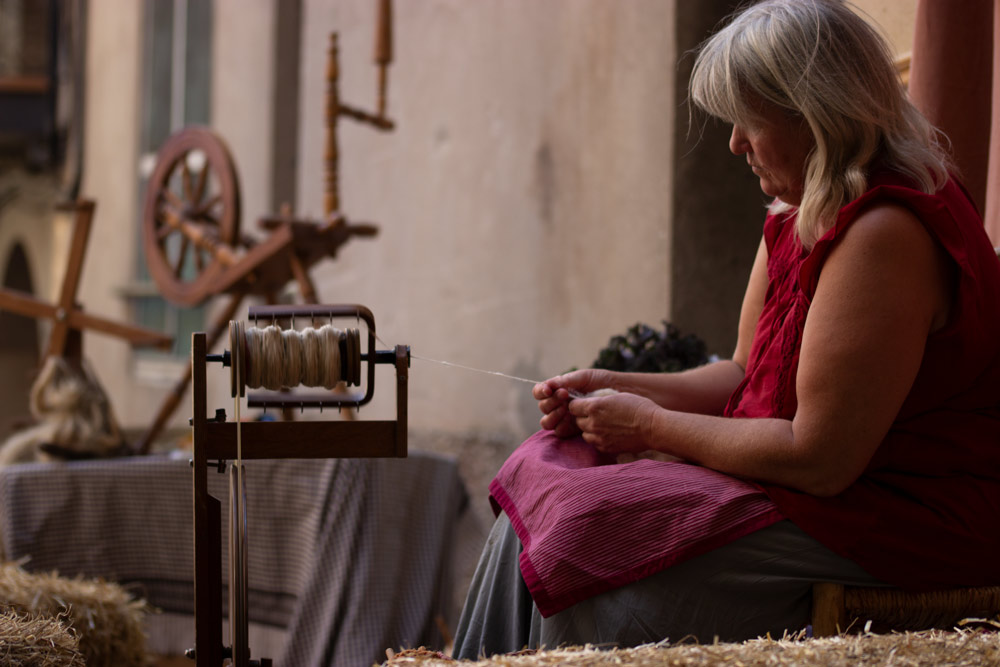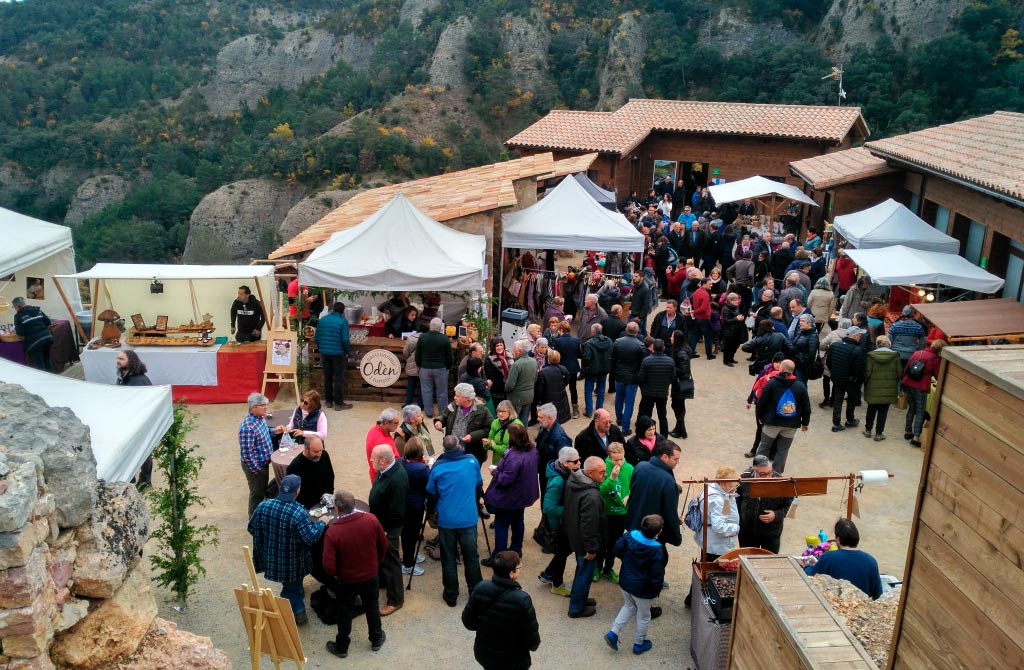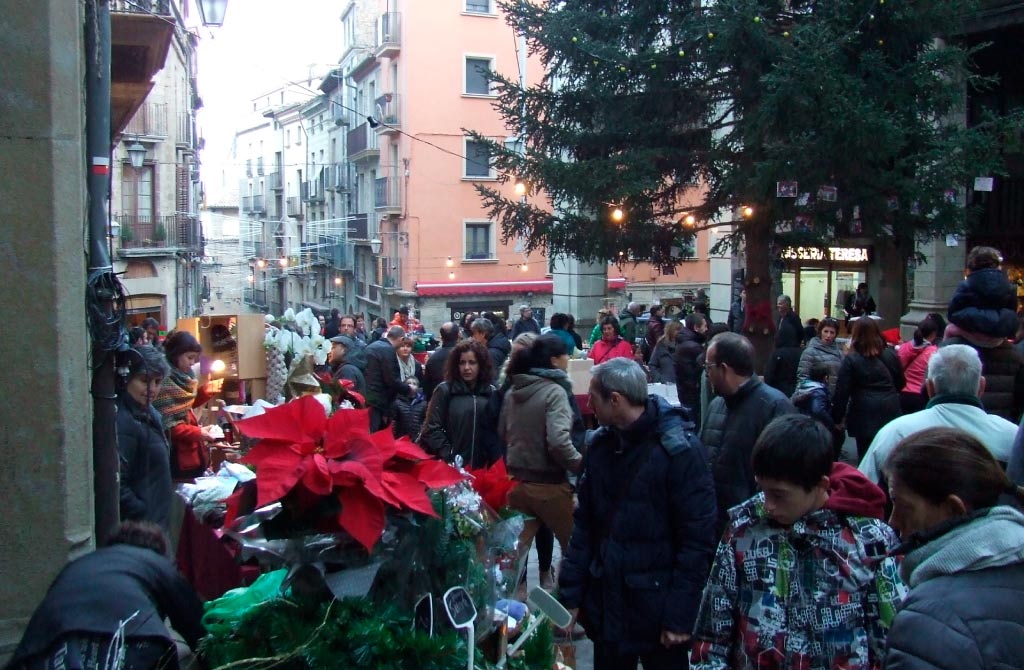INTANGIBLE CULTURAL HERITAGE OF THE PYRENEES AND THE LANDS OF LLEIDA
EL SOLSONÈS
A WORLD OF LONG-LASTING TRADITIONS
There are many important historical and natural sites for visitors to explore in this vast comarca (local district). It is home to museums, palaces and buildings of historical merit, as well as having a vertiginous landscape of ravines, gorges and cascading waters; this is a truly exceptional destination. This is a comarca where life does not just centre around the villages and the capital, but is also about the farms that are scattered throughout the territory. Its intangible heritage, and indeed the character of every Solsoní, owes a lot to its geographical location in the heart of the country, halfway to almost everywhere, and on the very edge of the Pyrenees.
The journey
Visiting El Solsonès is a journey of discovery to a land where local and regional festivals abound and are synonymous with the comarca itself. Despite changing trends and globalisation, the deep-rooted network of personal and work relationships between the people of El Solsonès has stood the test of time. Little-known villages are just waiting to be explored, and the Solsonins are always quick to invite visitors to choir recitals and performances of traditional dance, such as the Ball Pla, Ball del Roser, and Ball dels Cascavells. These timeless traditions are a symbol of local identity and have remained virtually unchanged for centuries.
The Carnaval de Solsona (Carnival) deserves a special mention here; if you go there, be prepared to join in with the fun and general revelry. On the run up to Ash Wednesday, people are encouraged to take themselves less seriously and to enjoy a week of satirical fun. On the Saturday night, the streets of the town become a sea of revellers, who look skyward in expectation; an unusual event is about to take place, as a model donkey is hoisted to the top of the bell tower. A reign of mockery and parody, presided over by the gegants bojos (mad giants), continues for several days in which the town hardly resembles its usual solemn and stately self.
During the celebration of Corpus Christi, the people of Solsona once more take to the streets. This time, the mood is serious and more formal, with events involving the bishop, giants and dancers transforming the town centre and the Plaça Major (Main Square) into a pageant of flowers, music and joy. The nightly celebrations, which include: the Roda de Foc (Wheel of Fire), Cercavila de Trabucaires (a parade of people carrying blunderbusses), the Processó (Procession), the Catifa de Flors (Carpet of Flowers) and the Tronada (fireworks), transport participants back to a medieval Solsona that seems to have resisted the passing of time. On the feast of La Mare de Déu del Claustre (Our Lady of the Cloister), at the beginning of September, the capital welcomes people from all over the country to celebrate the Festa Major (Mian Festival). This is a celebration with a long history, but one that, with the over time, has steadily become less about religion and more about local folklore, traditions and customs. At these annual festivals the local people bring back to life a world that their ancestors would have known: Gegants (giants), Nans (dwarfs), Cavallets (pantomime-like horses), the Àliga (eagle) and the Drac (dragon) dance and frolic on the same streets and squares that they frequented back in the 15th century. Every festival here has its own soundtrack, which somehow helps to narrate the history of the region, but this cannot be found in any sheet music. The popular music played for the Ballets dels Gegants (Dances of the Giants) at the local festival and at the Carnaval of Solsona was probably written in a similar way to how the dances themselves developed. Later, Joan Roure collected and arranged many of these pieces to create a more harmonious sound. Now, in the 21st century, they have come to represent a musical journey into local history. In Solsona, visitors are also welcome to take part in the neighbourhood festivals and to join the local residents in celebrating each particular feast day. These small community get-togethers are what make neighbours part of the family; they provide a break from the daily routine, as the streets become canopies of colourful decoration. These little festivals are what strengthen smaller communities. A trip through the heart of the capital during the celebrations in Carrer Sant Llorenç, Plaça de Sant Joan, Carrer i Plaça de Sant Roc, Carrer Sant Miquel or the neighbourhood of Sant Ramon is a must for any visitor. Throughout the region, and not just in Solsona itself, visitors will discover festivals and community gatherings which are important dates in the local calendar and which are also an opportunity for residents to socialise. When visitors take part in these local celebrations, they too will understand how vital and emotional these events are for families and friends in small parishes, villages and neighbourhoods. In Hortoneda, Sant Just, Sant Ponç, la Coma i la Pedra, Guixers and Lladurs, the busy schedule of local events, which have their origins in times long past, are a reminder to each generation of their responsibility to pass them on to the next.
Calendar of festivals and gatherings: Castellar de la Ribera, Clariana de Cardener, Hortoneda, Sant Just i Joval , Sant Ponç, Coma i la Pedra, Guixers, Lladurs, Llena, Montpol, Timoneda, Torrents, Llobera, Molsosa, Navès, Besora, Busa, Linya, Pegueroles, Selva, Tentellatge, Valldora, Odèn, Olius, Pinell, Pinós, Ardèvol, Matamargó, Sant Just d’Ardèvol, Vallmanya, Riner, Freixinet, Miracle, Santa Susanna, Su, Sant Llorenç de Morunys.
Getting to know the people of the comarca’s capital, and also those from the villages and farmhouses scattered of El Solsonès, will help visitors understand how years of strong family ties have been instrumental in giving this land its singular culture of rituals. In some parishes, old religious rites, such as the Benediccions del Pa i del Terme (blessings of bread and the parish) and the Salipàs (blessing of houses with a mixture of water and salt, at Easter) still persist to the present day. A whole world of unexplored culture awaits visitors. At this point in their journey, they will also discover that El Solsonès is rich in regional dialects and accents, which have been preserved by a strong oral tradition. With the aid of a linguistic map, they will learn that: in Odèn the people speak like the people of Oliana; in the Vall de Lord, the local accent is similar to that of Berguedà; in the southern part of the region, they speak like the people of Bages and Anoia; and that Solsona even has its own peculiar dialect. Visitors will also learn how to tell where each Solsoní comes from by their accent, as well as picking up some local vocabulary themselves. For example: local people use trumfo instead of patata (potato); trossar instead of cordar (fasten or tie); and voliac instead of ratpenat (bat). A mata-ruc de solsoní (literally, a donkey killer from Solsona) refers to the tradition of hanging a fake donkey from the belfry. Tate is the abbreviated form of the girls’ name Claustre (after Our Lady of the Cloister). The people of El Solsonès can go forth into the world proud of their local language, which is one that only they have full access to.
Catalogue of farmsteads scattered across the local parishes.
The crafts people and artisans of the comarca work hard all year round and display their wares to natives and visitors alike, at fairs held up and down the country. Farmers’ markets and craft fairs contribute to an understanding of life as it is, and was, in El Solsonès. As they stroll through the marketplace, visitors will find basket-makers, giants, trabucaires, bladesmiths, as well as stalls selling espadrilles (cloth shoes), cheese and sausages. The Fira de Sant Isidre of Solsona is a showcase for the agricultural sector, which has sustained domestic economies here for generations. The livestock, machinery, tools and handmade craft products exhibited at these local fairs bear testimony to the fact that farming is still the basic fabric of this rural society. At this stage in their journey, visitors will realise that there is still so much more to see. With so many agricultural shows to choose from, they will be able to experience, at first-hand, the work of livestock and crop farmers from all over the comarca. The Fira d’Ous d’Euga, at Sant Llorenç de Morunys, is a festival dedicated to pumpkins and gourds and was inspired by the legend of the ‘Tres savis prudents dels Piteus‘ (Three prudent wise men of El Piteus); it also includes a pumpkin competition. At the Fira de Santa Llúcia de Navès, visitors are guaranteed to find a great variety of locally grown produce and craft products. The Fira de l’Empelt de Llobera (Tree Grafting Fair) and the Fira de Sant Ponç de Prades include a cultural programme that brings together both branches of the comarca’s intangible heritage. Walking from stall to stall at the weekly farmers’ markets, which are smaller versions of the bigger fairs, visitors will get a good idea of the character of the local people and the lives that they lead. The market in Solsona is held on Fridays, while that of Sant Llorenç de Morunys is on Sundays. These are not just re-enactments of times past; they provide a window onto what is going on in the local area today. By now, visitors will begin to understand how festivals, grass-root community events, and fairs play an essential educational role in broadening people’s awareness of life in the comarca, helping them to comprehend its past, its people and its economy, which are all so intrinsically linked to the land. Everyone will come away from their visit to El Solsonès with a better understanding of the local people and their lives and also with some very special memories gathered along the way.
Fira del bolet del Solsonès (Mushroom Fair),
October.
Fira del caçador de Solsona (Hunter’s Fair),
May.
